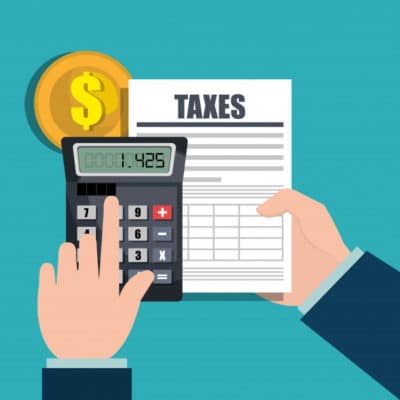Product Return Fraud Expected to Rise in 2020
2019 saw staggering 35% increase in fraudulent returns
The retail industry faces a host of challenges – changing consumer tastes, the economic impact of the coronavirus, and a tight labor market, among them. But perhaps no threat is as diabolical as return fraud. According to an annual report from Appriss Retail, the estimated return fraud percentage jumped 76% to 8.8% in 2019. And, fraudulent returns topped out at $41 billion, a 35% increase from 2018. If this revenue loss was a company, it would rank #2 on the Fortune 500. In other words, return fraud is cutting a huge chunk out of the retail industry’s profits, and the upward trend will likely continue in 2020.
Types of return issues
Return fraud can take many forms:
-
Serial returners: These are shoppers who return purchases at a high frequency, without valid reasons and often to exploit loopholes in return policies.
-
Buy-online-return-in-store (BORIS): As online shopping has become standard in modern life, BORIS return fraud has increased dramatically. It accounts for $1.6 billion in lost revenue, compared to $400 million in returns to non-store locations.
-
Wardrobing: Shoppers buy an item, use it, and return it for a full refund.
-
Returns from purchases made with stolen or fraudulent cards: Here, customers use stolen or fake credit cards to buy items and then return them for a full refund. This is a big loss for retailers, as the original purchase will often be voided once the fraudulent credit card activity is reported.
-
Cross-merchant, no-receipt returns: This scheme is a bit more elaborate. The thief purchases a high-value, boxed item from an online merchant and then claims it was never delivered. They get the chargeback to their credit card and then return the item to a retailer with a lax return policy. They’re issued a store credit that can eventually be traded for cash through various websites.
However, these are just a few of the most popular types of return fraud. There’s no shortage of ways to scam retailers out of hard-earned revenue.
Most returned product categories
It’s also critical to look at where return fraud is most likely to take place. In 2019, the highest return rates were in sectors with high-value items and/or generous return policies. The auto parts industry saw a 19.9% return rate, with footwear close behind at 15.8%. Department stores and apparel were neck and neck, with 12.6% and 12.5%, respectively. Housewares logged a 10.9% rate.
The higher the return rate, the higher the likelihood of return fraud. Retailers in these top five categories are at risk and should be on high alert.
How return fraud hurts retailers
Aside from the immediate revenue loss, there are other ways that return fraud impacts retailers. Merchants face major overhead costs to process returns, including receiving, sorting, and repackaging goods for resale and disposing of unsellable merchandise. These same merchants also have to get creative to offset the negative business impact of return fraud. This usually takes the form of increased prices for consumers or reduced operational costs (which means lost jobs). Estimates show that return fraud has cost American workers 859,833 jobs, according to Appriss.
Additionally, return fraud costs states $1.6 billion in lost taxes and local municipalities lose $400 million in taxes.
And, on top of all this, retailers are faced with trying to make returns as frictionless as possible – a move that could work against their efforts to stop return fraud.
How are retailers deterring fraudulent returns?
Retailers are trying out several tactics to stop dishonest shoppers. They’re modifying their return policies during periods of higher returns (e.g. the holidays). They’re also requiring receipted returns. Additionally, they’re making returns more difficult, by enforcing restocking fees and adding more steps to their processes. They’re even trying out new technology like the Shark Tag, an anti-tampering device that must be removed before being worn and serves as a deterrent for wardrobing.
However, collectively, these techniques are still not enough to stop fraudulent returners in their tracks.
What can retailers do to protect themselves?
Merchants can start with robust, clear, and consistently enforced return policies, combined with the strategies outlined above. But there’s an even better solution – re-turns.com.
 Re-turns.com is a universal product return system that logs all return information from participating retailers and their customers in a single database.
Re-turns.com is a universal product return system that logs all return information from participating retailers and their customers in a single database.
Through this system, each customer is assigned a Consumer Product Return Number (CPRN), which is like a credit score but for their return activity. High scores indicate trustworthiness; low scores show an increased likelihood of fraudulent activity. These scores will fall in a range, say, from 200-400.
Merchants can identify the minimum CPRN they’re willing to accept. If a customer attempts to return an item to them, but their CPRN is below the acceptable threshold, they’ll be denied and a potential fraud incident will be prevented. With re-turns.com, merchants will no longer need to build profiles for repeat offenders or waste manhours on analyzing transactions. This is an automated solution with a huge ROI.
Find out more about this groundbreaking system at re-turns.com.
Social media post:
Return fraud hit a record high in 2019, and the trend will only continue in 2020. What’s causing the increase, and how can retailers fight back? Find out in our latest blog post:







